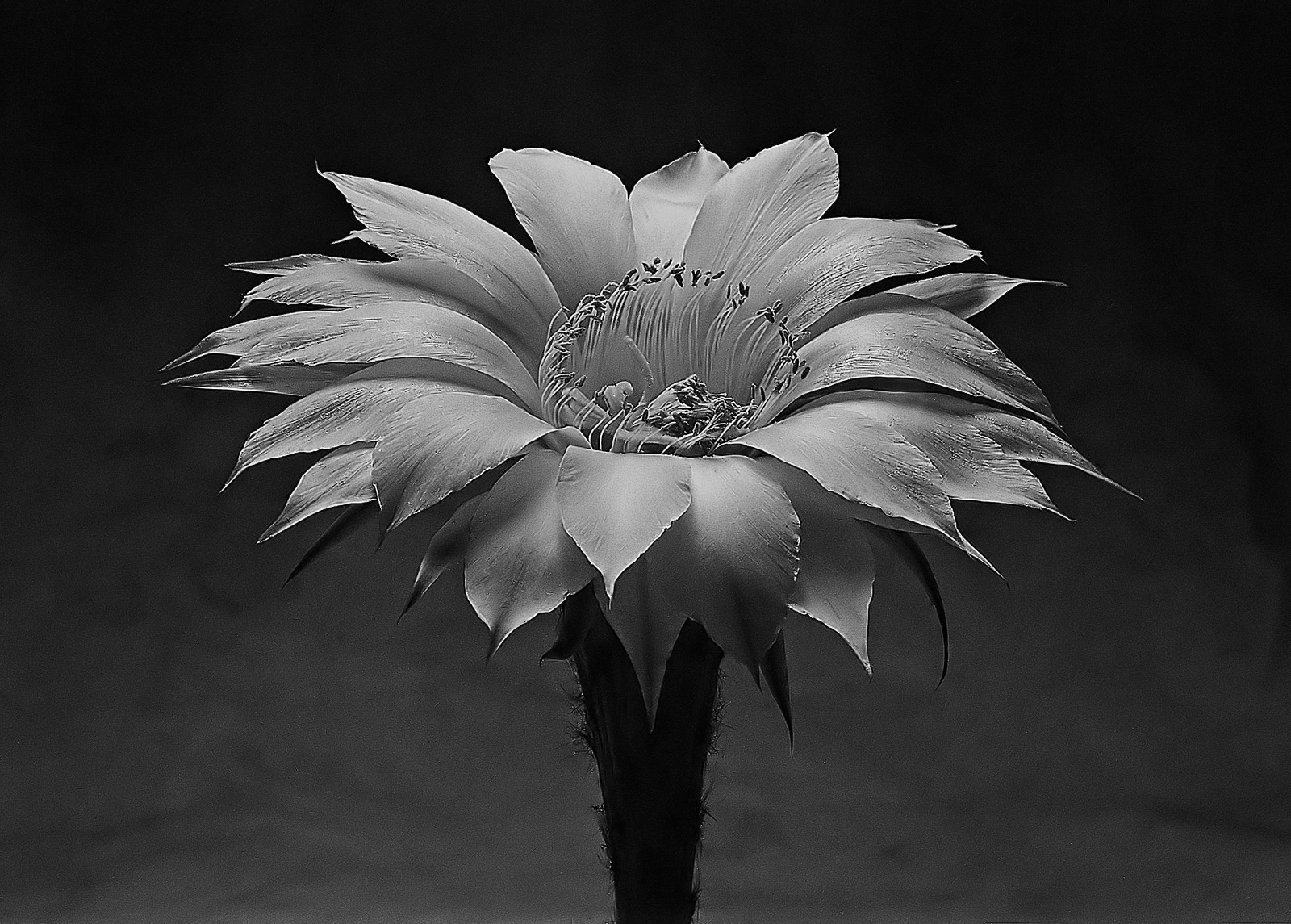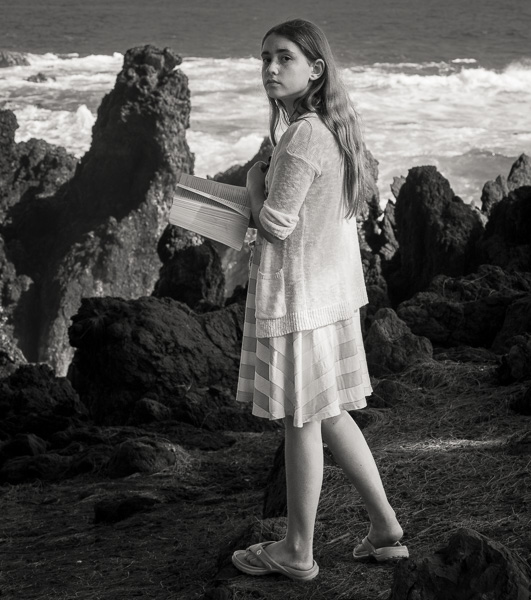The Importance of Knowing that you can enter and once there—stay awhile


Museums are not like a Starbucks which is designed for your comfort and encourages a repeat visit for the food and the social aspect one experiences there. My family’s last visit to a museum resulted in our son, four at the time, almost placing his prints on a Van Gogh. There was a restriction on the floor to indicate that one must not get too close, however, said four years old was in my arms and as we looked at the painting together his little fingers did what they naturally want to do, they reached in for the touch where he almost, missed it by a smidgen, added his fingerprints to that of history. Would Van Gogh have minded? We were surrounded by security within moments of the almost mishap. I reassured them no touch had occurred but imagine that they knew that as they left us alone rather quickly and were, more than likely, relieved when we ushered our children out of the museum shortly after. We went to the bookstore across the street where they excitedly touched toys, books, and exhibits to their little heart’s content.


Art is intimidating. Untouchable. If a piece is in a museum or gallery, it must be quality art even if the average viewer does not especially understand why, and is usually afraid to ask for fear of appearing less than in the glare of the intimidating stares of those who know about art. However, many art critics are also questioning this paradigm. The widely renowned art critic Robert Hughes who passed away in August of last year was vocal in this regard. Jonathan Jones’ ONART blog found at theguardian.com and titled, Robert Hughes: the greatest art critic of our time, writes about Hughes’ views: “For the best part of his career as a critic, he lived in New York. It was the decline he perceived there…that so disgusted him with the fall of modern art. This was a political and ethical judgment, as well as artistic. Art had become the plaything of the market, he believed. It was getting too expensive as it turned into the sport of 1980s investors. Artists like Jeff Koons and—he later added—Damien Hirst were barely real artists at all, but grotesque market manipulators.”
Post-modern art and the art of now is where the discussion becomes animated. Art critics and gallerists can be turned by hype just as easily as the rest of us. Hughes, in his article Day of the Dead from September 13th, 2008 and published at theguardian.com, tells us in his words what he thinks of Damien: “Hirst is basically a pirate, and his skill is shown by the way in which he has managed to bluff so many art-related people, from museum personnel such as Tate’s Nicholas Serota to billionaires in the New York real-estate trade, into giving credence to his originality and the importance of his ‘ideas’. This skill at manipulation is his real success as an artist. He has maneuvered himself into the sweet spot where wannabe collectors, no matter how dumb (indeed, the dumber, the better), feel somehow ignorable without a Hirst or two.”


The question being, do the collectors like, indeed love, the Hirst they are purchasing? Or are they purchasing pieces based on hype and potential returns? In the same article as cited above, Hughes references Hirst’s shark piece, The Physical Impossibility of Death in the Mind of Someone Living. You can find a statement about the shark piece at damienhirst.com and a picture of the sculpture itself. I am not an art critic, and the picture via my computer probably looks nothing like the shark up close, and in real life, however, we have an exhibit at our local aquarium of a very large coelacanth, aka big fish that has been around for millions of years and is preserved in isopropanol; understandably two different types of fish with different connotations but each eerily suspended holding their stories inside a glass tank of human making. It is the words perhaps then that lend meaning to the piece, that intangible something that qualifies The Physical Impossibility of Death in the Mind of Someone Living as high art, expensive art. Of its sale, Robert Hughes said this: “One might as well get excited about seeing a dead halibut on a slab in Harrods food hall. Living sharks are among the most beautiful creatures in the world, but the idea that the American hedge fund broker Steve Cohen, out of a hypnotised form of culture-snobbery, would pay an alleged $12m for a third of a tonne of shark, far gone in decay, is so risible that it beggars the imagination.”


Hirst works in the post-modernist realm where the intended symbolism is enough to establish Art with a capital A. Like the use of garbage in the creation of art, the artist wants us to know that garbage was used, infusing the piece with meaning: waste, recycling, excess are just a few connotations that come to mind. In the online version of Discover Magazine you can find a slide show that explores the concepts and pictures behind garbage as art: Museum-Worthy Garbage: The Art of Over-Consumption showcases a few artists, one being, glass artist Matt Eskuche, “He says viewers occasionally react with hostility to his work, wondering: ‘Why the hell anyone would bother to waste their time recreating something they could just pick up on the street?’” Crumpled, thrown out, discarded, who wants to be reminded of the things we have bagged up and gotten rid of? Or the times that we felt just like ‘garbage.’ Artists take our garbage, in this case, the physical remnants of it, and show that it is possible to be transformed. The transformation of garbage to art is the clincher here. It becomes something else; something to be discussed and thought about when an artist takes it and remodels it. In the same Discovery article as quoted above, “Eskuche says individuals react differently to his pieces. ‘The work deals with waste and recycling to one person,’ he says, ‘capitalism and corporate lobbying to another, graphic and industrial design yet to another.’” Isn’t that the pop can I threw out yesterday? It is the discussion that cements this genre as Art.
The discussion surrounding the 1% versus the 99% is one of the louder ones, inspiring Occupy Wall Street just over two years ago and the discussion continues with ongoing topics that explore the disparity in daily media. When someone hears a reference to the 1%, they automatically think of the rich. There are assuredly many artists that are worthy of the capital invested in them. However, the crux of the concern is art as an investment, investment and hype, which produces an art world peopled with celebrity artists whose motives and talent are questioned. Jonathan Jones from the same blog as quoted earlier says: “If [Hughes] was right, God help us all, for the conquest of art by money and the proliferation of celebrity artists that he condemned continues to multiply.”


Interestingly it is the internet, that wide beast of communication pathways and open voices that just might be the equalizer or, at least, the harbinger of some popular taste to the art world as it is known today. The Internet is a discussion at its very core; it is where people come to exchange ideas and talk to each other about stuff they like and stuff they don’t. The internet has been instrumental in opening up the dialogue between those in the know from the art world and those on the ground with little knowledge of art history and only a view to either enjoy art or not, just for the sake of it.


Brian Droitcour is a legitimate art critic and has written for legitimate publications on art. He began reviewing art through the well known user-only- review site Yelp. I came across his Fifteen Stars, project during a random Twitter browse and was drawn in to read more. Fifteen Stars is a compilation of reviews from Yelpers about their New Museum experience. The New Museum exists as a live and real piece of real estate in New York, however, Fifteen Stars is on-line only and features an experience wherein the Yelp reviews and their star count is accompanied visually by various artists. You can find Fifteen Stars . Once the visuals are complete, there is a great essay at the end where Droitcour talks about the meaning of art and how it relates to the world today. Below is a quote:
“So if one person tells a story about her experience and thinks, eh, that was worth about two stars, and someone else is like, wow! five stars and someone else is like hmmm, ok, three stars, and someone else is like lol ew, one star, and then someone else still is like hey, pretty good, four stars—what we have as a result is a constellation of fifteen stars, a glimpse of the truth of the social life of art that doesn’t depend on the serious accounts of institutions, or histories or any of the apparatuses that claim control of art—instead what we have is a story of art and the people who see it… What’s interesting is a perspective when it’s taken in collectivity with others. Stars add up to constellations add up to galaxies—only the whole universe is the truth.”


There is purposefully, I believe, missing periods, as in the punctuation mark, throughout when a sentence ends just like the one above. The universal language of simplicity is the key to unleashing art from the serious place it usually sits. In the same essay as above Droitcour says: “Seriousness is a comfort to the 1%—it assures them that their exploitation of others is worth something because it makes it possible for something (even if it’s just their name) to outlast life.” Seriousness has its time and place, like the organization of standardization tests and the paying of your bills. However, it is becoming more clear that our creative minds are open most fully and most ready to absorb and transform our world when we are at play. The institutions that declare what art is art are peopled with highbrow folk who know their stuff, they’ve gone to art school and know upon looking at a piece what genre or period it hails from. These are the experts, however, if art is to live and let’s be clear, art is derived directly from that of the living moment, inspired by (at least supposed to be) by those moments in our lives that bring us to our knees either in confession or a most glorious bouquet of flowers from the husband who declares a newly blossomed love. They are the moments that shake our insides and leave the artist no choice but to transform their experience into something more. The feeling is so large that it can’t contain itself as it stands but must be twisted and turned into something else in order to release it and allow it to live on for both the artist and the audience. This feeling and this transformation is something that should be sacred like a priest or yogi’s dedication; a fake version just doesn’t have the same punch.


The Yelp review socializes art for everyone. Brian Droitcour’s Fifteen Stars is a piece of art that takes that process and transforms it, enlightening and opening up the idea that anyone can have an opinion and anyone can enjoy art. Robert Hughes similarly wanted to bring art to the people. His television show The Shock of the New reached over 25 million viewers, Hughes was a critic and via his show was a teacher also to the newbie interested in the world of modern art. Kate Taylor in her article from 2008 from theglobeandmail.com , and titled Robert Hughes: The man who reanimated modernist art with The Shock of the New, quotes the ‘man’: “The basic project of art is always to make the world whole and comprehensible, to restore it to us in all its glory and its occasional nastiness, not through argument but through feeling, and then to close the gap between you and everything that is not you, and in this way pass from feeling to meaning.” It is this transformation of ‘feeling to meaning,’ that opens up the richness and the beauty available to us in art on a deeper level. Hughes wants us to understand what we are looking at, to give us that frame of reference that moves us beyond what is before our eyes only. Droitcour opens the door so that everyone can be a part of the discussion.
The little one who almost touched the Van Gogh is the more detailed artist of our two children, he truly takes his time painting and adds layers and texture to his work as opposed to our other son who is a master of efficiency, a few strokes, and his picture is done. It is enough that it resembles what he wants to portray, whereas our younger son keeps at it until he feels it is aesthetically right for him. Will he want to be an artist one day? We’ll never find out unless we introduce him to the world of art. Just like someone who does not know how to read yet, they know that letters are letters and realize that they must mean something but that meaning cannot be revealed unless reading is learned. Just think about a time you may have gone into a foreign part of town or a foreign city and were not able to read the signage, you know what is going on and you can do what you need to do but wouldn’t the experience have opened up in different ways had you been able to understand more of what you were seeing? Education requires a student, and a teacher, this exchange of ideas is paramount to the development of the human race. It is that which opens up the world to us, art included. Just ask Malala.


In her book I am Malala: The Girl Who Stood Up for Education and Was Shot by the Taliban, Malala Yousafzai says: “Education is education. We should learn everything and then choose which path to follow.” You can’t even know there is a choice if you are excluded, once included it is important to continue to give everyone else the opportunity to know what you know, to keep history moving into the present in order to open the doors of consciousness widely, like Brian Droitcour and to teach passionately like Robert Hughes. With heart and feeling.














